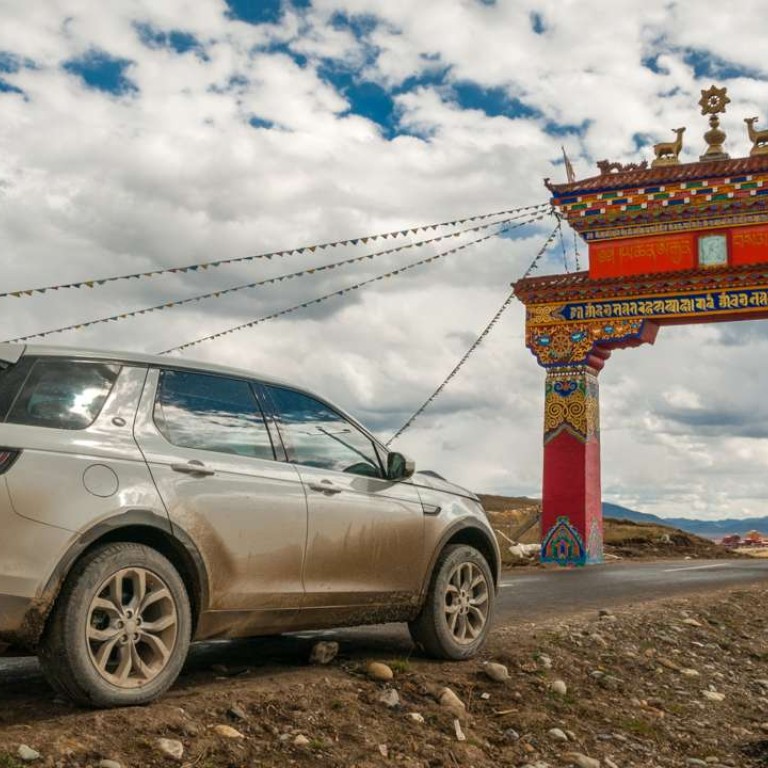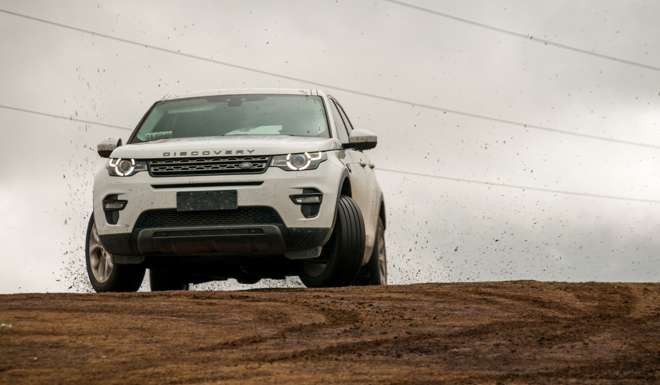
Getting tough with Land Rover’s Discovery Sport in Sichuan
Being 4,830 metres above sea level, at the snowline atop the pass over Mount Zhuodala, was not the best place to get a puncture. It was, however inevitable; while huge sums of money are being poured into transport infrastructure in rural Sichuan province, transforming the area with new tunnels and bridges, there are still old and temporary roads where construction is under way, and this section of the Ganbai Road is no exception.
We were relieved to discover that the Land Rover Discovery Sport we’d rented from eHi Car Hire came with a full-sized spare wheel. Despite the Discovery Sport being produced locally by a joint venture in China, our SE trim SI4 version was an import.

At a tyre store in the nearby town of Ganzi, a Tibetan woman, small and strong like a yak, threw the wheel around like a balloon and found the problem, a large gash from a rock.
Setting off from Chengdu a few days earlier, we soon ran into traffic jams on the winding roads up to Kangding city thanks to China’s October holiday exodus. Diving down a quarrying track near Kangding Airport, we left the crowds of mainly Chengdu-plated cars behind. The track finally disappeared into faint tyre marks in a field.
The Discovery Sport comes with a number of set off-road programmes, such as mud-ruts and sand. Impressively, it is able to climb very steep grass inclines, but its biggest shortcoming off road is the limited ground clearance, so you have to be ever vigilant to avoid scraping the undercarriage.
With no room at the inn, camping at 4,100 metres was the best option. At that altitude trying to eat a doughnut was a struggle and, after spending the night tossing and turning with a pounding headache, I awoke dry retching.
We took the road less travelled at Xinduqiao town, leaving the holidaymaker hordes behind for their set stop photo opportunities as we headed along the G318 towards Batang. Thirty kilometres out, we came across our first police roadblock. The officers don’t know what to make of three foreigners driving a Land Rover, and a slew of phone calls ensue. Finally the boss arrives, checks our passports and, assured that we are not heading for Tibet, allows us to continue, helpfully telling us the phone number of the “only” hotel in Batang allowed to take foreigners. When no one answers the number given we manage to check into the first decent looking hotel we find. Batang, little more than a two-road town where the main industry is begging, is the last major stop on the road before crossing into Tibet.

Unable to continue westwards, we set out on what Baidu ominously refers to as “a road with no name”, which shadows the border. We pass through the yak rush hour as herders put their beasts out to pasture, and soon we are following a small river along an alpine-like conifer forested valley. Coming to an abrupt end at tunnel construction the next four hours put the Discovery Sport’s off-road ability to the test as we climbed and descended two major passes along a dirt track. Off the asphalt it is second to none in its class.
Now on the Ganbai Road, speeding towards the monastery at Yarchen Gar (Yaqing), the vehicle displays impressive road holding for an SUV. Where things fall apart are with the drivetrain. Go to overtake and you are stuck in the lane for oncoming traffic with your foot flat against the floor waiting for the turbo to kick in. Our car had a tendency to start in Eco mode; switching this off on the dashboard helped to ease the acceleration problems of the Ford-sourced 2.0 turbo petrol engine. Jaguar Land Rover’s recently unveiled petrol Ingenium engine should make its way into the model within the next year, solving some of the problems – and it will hopefully be accompanied by a remapping of the ratios of the ZF nine-speed automatic transmission. In the meantime, a Sport mode and paddle shifts can in certain situations help.
Switching off Eco mode on the dashboard helped to ease the acceleration problems of the Ford-sourced 2.0 turbo petrol engine
By the time the monks and nuns reach the stream, there are signs of a stampede. We arrive a little before evening. At first it seems a solemn affair as the first specks of red appear coming down from the hills. Great columns slowly make their way along. Now, at the stream, many seem more like naughty teenagers. A nun produces a pink covered iPad for a shot, others have white earbuds protruding from their Buddhist robes; many gaily toss their rubbish into the stream.
Yarchen Gar, in the former Tibetan area of Kham, is home to about 10,000 monks and nuns. They live in ramshackle huts which for men are built into the hillside and for nuns are separated by the river. Monks are forbidden to cross after dark. The spectacle is only witnessed by about 20 tripod-toting Chinese tourists.
The next morning, with temperatures of around 3 degrees Celsius, we are glad of the SE trim’s heated front seats. In China, the SE is the mid-level version and reasonably equipped with partially leather seats and a panoramic roof. The navigation system, however, seemed hopelessly lost in Sichuan, often not even realising the car was on a road. Although the infotainment system has multiple language options, the navigation only works in Chinese.

Despite good all round vision, a reversing camera would be useful. While the rough finish plastic looks good on the dashboard, it is uncomfortable on the doors if you rest your arm on them while wearing a T-shirt. The door locks and electric window controls are opposite to where you would expect, and this takes some getting used to, plus their material is of questionable quality. In the back there is plenty of space but there is insufficient ventilation for a car of this price. Our car was the five-seater model, but even so the luggage space was not adequate for the equipment needed for a week-long trip for three.
A few phone calls in Ganzi confirmed that Sertar (Seda), home to the world’s largest Buddhist academy, is currently closed to foreigners. Instead, we set off for Barkam (Maerkang), where Tibetan-style houses and towers line the hills.
After six days we arrived back in Chengdu. From Wenchuan, the route has a highway that looks as if it is will reach as far as Barkam within two years. All across the region the roads are being improved, which will no doubt help raise local residents’ living standards. It will also though bring mass tourism and mean that it is no longer necessary to drive in a vehicle such as a Discovery Sport. Our Land Rover averaged 11.0 litres per 100km over the 2,281km covered, which is reasonable considering the amount of rough track driving covered, plus the occasional all out off-road.

